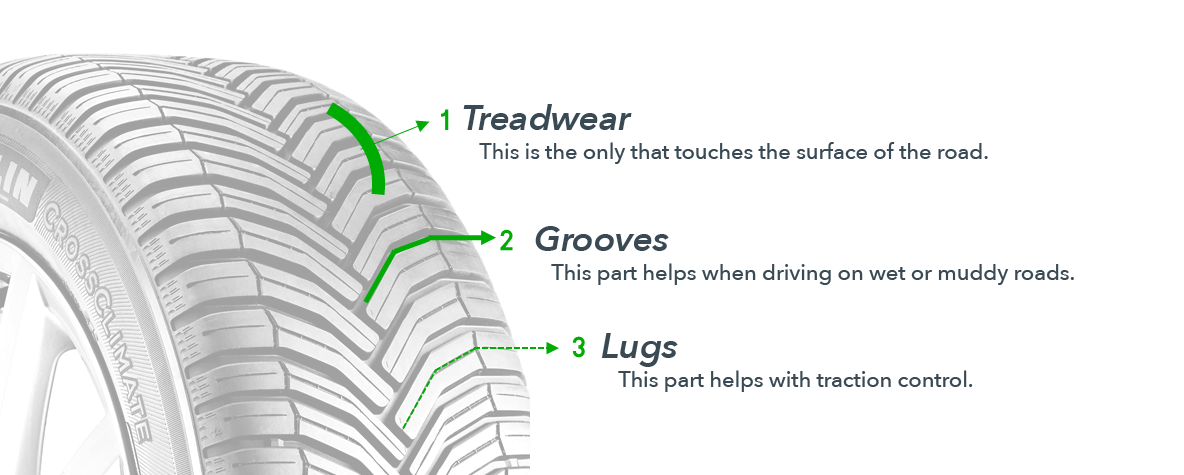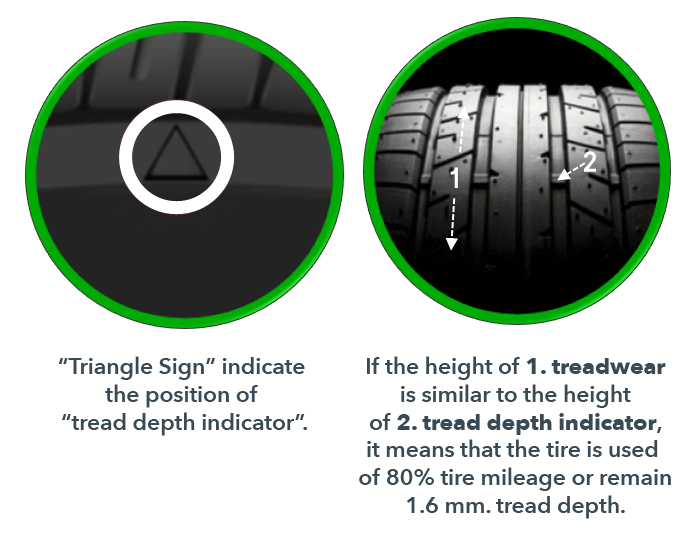Checking your tire tread?
What is treadwear?

When we initially look at tires, the pattern or the design on the tire surface is a unique tread. That tread has been designed for different and/or multi-purposes when you commute on the different roads and in different conditions, especially in Canada. To better understand, here are the 3 key components of tire tread:
Treadwear: This is the only part that touches the surface of the road.
Grooves: This part will help when you drive in different road conditions e.g. wet surfaces or mud.
Lugs: This part helps traction control.
How to initially check your tire condition?
The tire lifespan relies on your driving style and the maintenance frequency. However, the tread will ultimately be worn, and the tire will need to be replaced. The details below describe how you can initially check your tires’ condition;
1. Tread Depth – You can check your tires’ condition through tread depth. If the tread depth is only 1.6 mm, we recommand you change your tires. To check the tread depth, you must follow the steps below;
1.1 Look for the triangle sign on the tire shoulder, there’s a tread depth indicator in the grooves. This indicator will help you calculate the depth of the tread.

Some levels of tread depth are more likely to affect braking performances. The figures below illustrate different performances and different tread depths;

2. Bulge Tire - if you have noticed abnormal conditions on the tire, e.g. bulge on either sidewall or shoulder, we would suggest you stop driving as the tire may blow out.
3. Cut on Tire - please be careful when you are driving, as the tires are likely to be punctured when going over potholes, especially after Canadian winters. You have to make sure that the puncture tires are repaired properly.
4. Tire Texture - You can easily test your tires’ condition by pressing with your fingers. If the texture is getting harder and there is no flexibility, you should be thinking about replacing your tires.

